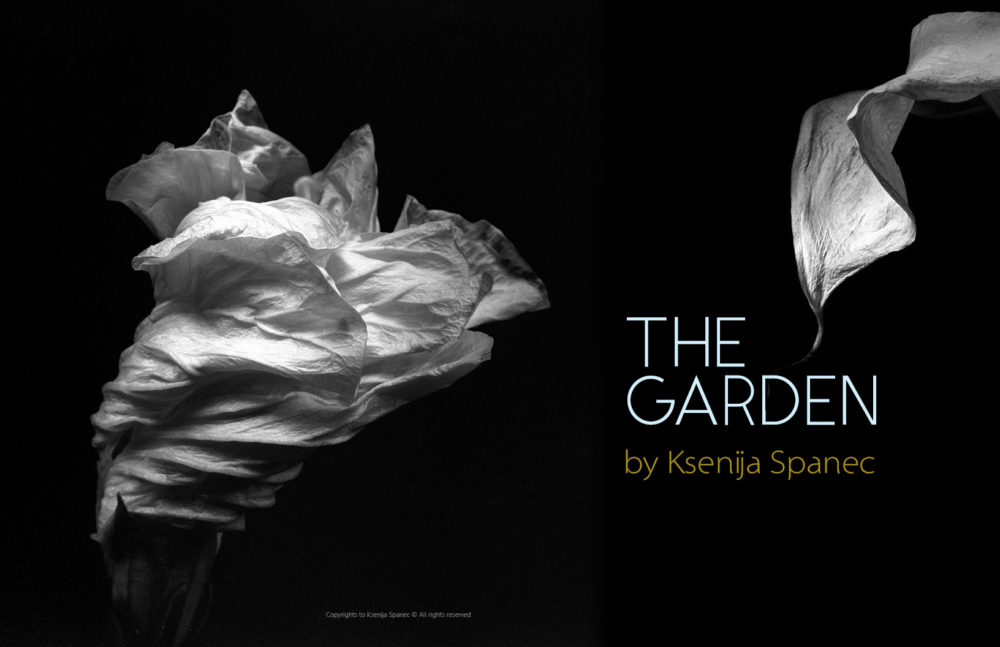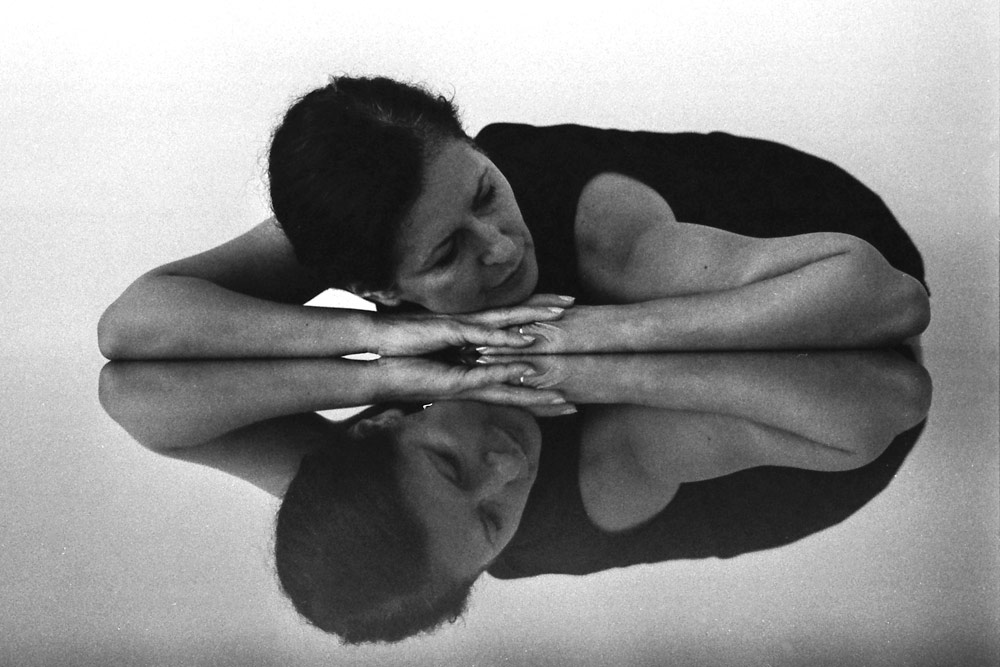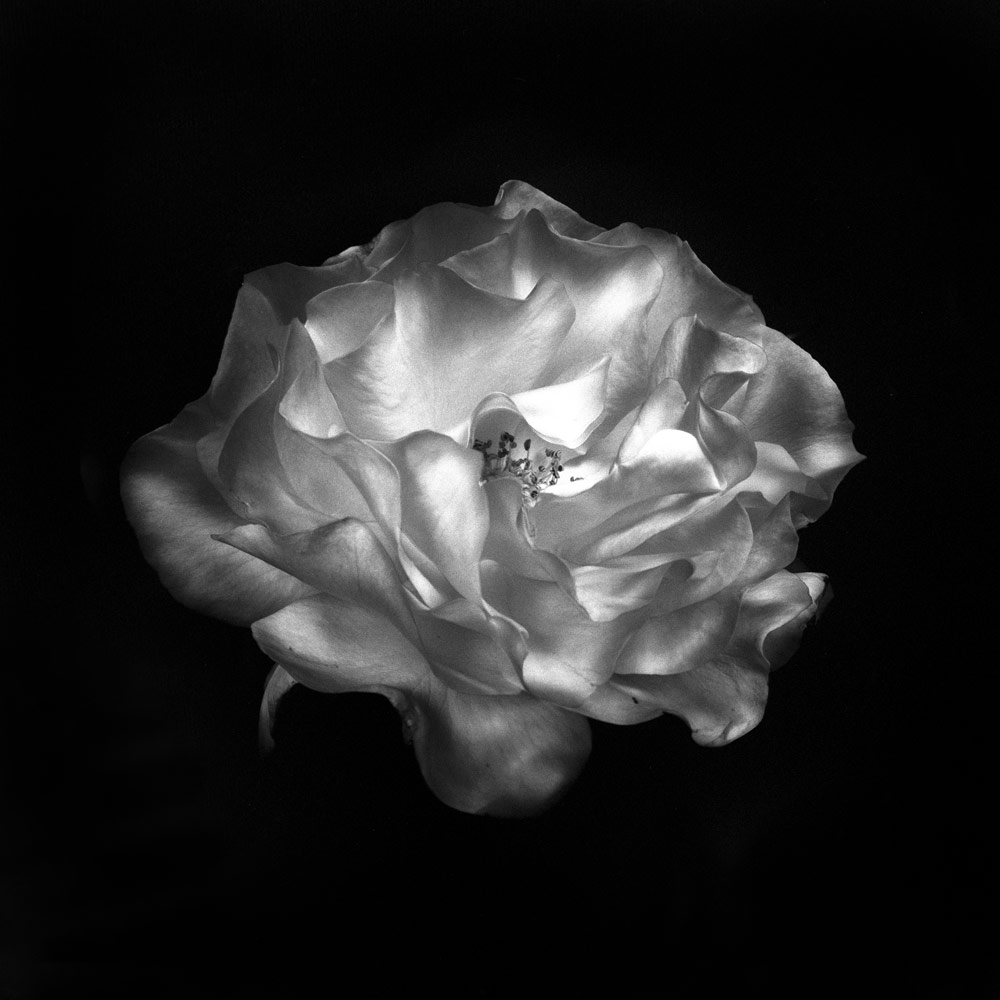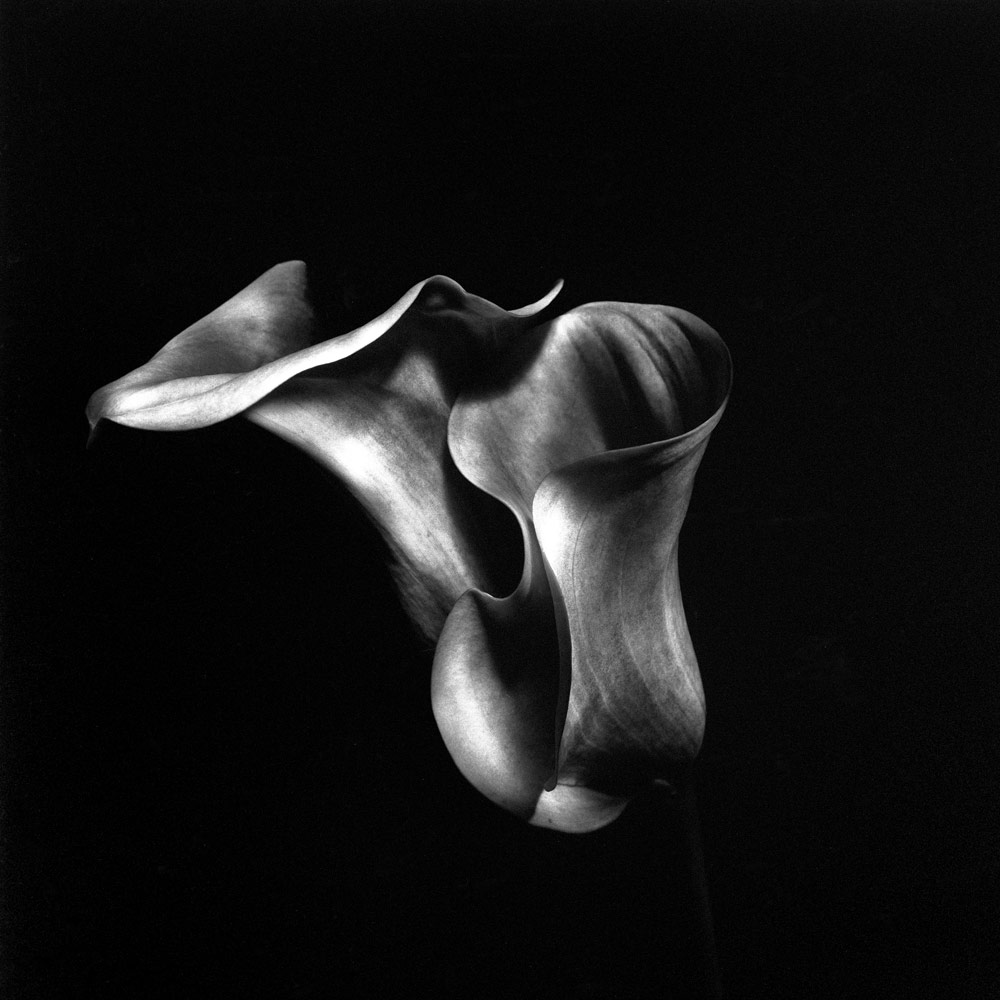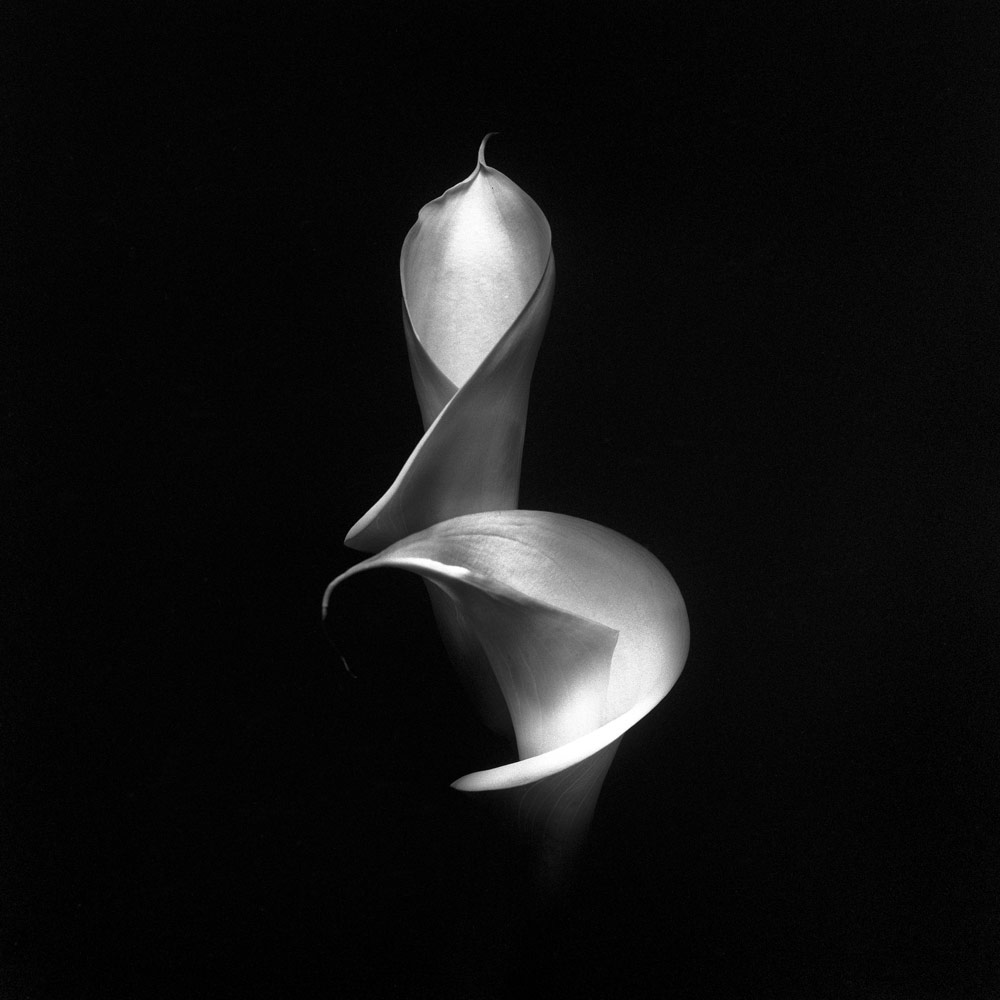THE GARDEN
by Ksenija Spanec
Ksenija Spanec
My project entitled “The Garden“, was born out of my fascination for flower and plant forms, and the sculptural feel they give me, while observing them under particular lightning conditions.
My interest for this subject started long ago, when as a little girl I played with plants, using them as toys, making dolls and various other objects, and also by putting them into water and then watching them glitter under the surface.
This interest has never diminished, it has enabled me to express myself in different ways.
The Garden is a series of black and white photographs, made on film, with medium format and 35 mm cameras and printed in the darkroom.
The setup for these particular photographs is always simple, with a dark or black background. I photograph the subject in the darkness of the room, using a little light bulb to illuminate the flower, during a long exposure.
This technique, called painting with light, offers me the possibility of making visible only what I want to be visible, thus reducing the composition and emphasizing the texture and form. The result is often seen as sensual, which is just fine, but confirms that people often experience the obscurity as mystery and mystery as sensuality.
I was born in 1966. In Zagreb, Croatia, where I still live and work.
Photography became an important part of my life 10 years ago, when I started to use a digital camera, which was replaced later with a vintage 35 mm camera and a range of medium format cameras. Recently, I started printing in the darkroom by myself.
It took me a lot of time to learn the process, as I am self-taught.
I learnt from articles on the web, books that I could find and of course by practicing. I learnt only what I need to, in order to realize an idea. However, each new idea was followed by other ideas, so I needed to go further in exploring the medium.
The question I have been asked before is why I switched from digital to analogue? I can finally say that the reason was my desire to have the whole process in my hands.
An artist should be able to produce their art unassisted, that is why I wanted to learn the whole process and to produce prints as a final result of my ideas. I really don’t dare consider myself as an artist or photographer, but I like to think I am expressing metaphysical ideas which I must realize, by using the medium of photography.
THE GARDEN
The feeling of Metamorphosis and Solitude. The delicacy of the texture that almost resembles fabric by making every detail and irregularity visible… It shapes pure emptiness in the air, there is no inner shape determining the form of the flower, dictating the subtle movement of its petals. This, almost a shell- sculpture, completely soft and fragile, is jutting firmly upwards as if having been abandoned by its inner form, only the spirit having the possibility to remain inside it. We are waiting for the shell to vanish, too, in its instantaneity, to completely lose its changeable shape, to slowly disappear…
Exactly at that moment, at the moment of metamorphosis, just before the “fabric” of the flower becomes even more loose, Ksenija Španec freezes its transience and fragility in time. It is especially visible in the example of hibiscus, the only flower in this series which the photographer shoots through different stages of its existence – first the observer can see the photograph of the flower blossoming in all its potency, then, in the second photograph we see the rough structure of its petals from another side, which was hidden while the flower was in blossom, and finally, in the third photo, we see all the petals put together in one bunch, withering, fading away, completely like an abandoned animal shell. What makes K. Španec’s photographs truly interesting is the fact that a flower doesn’t actually look like a flower – subtle, almost surreal forms of plants always resemble something else like they wish to show to the observer that everything in the world and the universe is contained in everything else, and that everything carries in itself a certain kind of hybridity which can easily be transformed into something else.
We are slightly reminded of certain paintings by Francis Bacon or drawings by a contemporary Croatian artist Davor Vrankić in whose artworks forms are deformed and inconclusive – they, as they are, do not absolutely resemble any known shape, but as if they had an urge to be transformed into something else. In the same manner K. Španec’s photographed flowers transform into surrealistic forms and become everything else but a flower itself. The photographer manages to succeed in making the plant metamorphosis by using analog cameras and black and white film and by using light painting technique. She carefully lightens up a particular part of a flower and then, all that remains are numerous contours and curves of the shown white object levitating on the black background. Certainly, when we look at the photographs of her callas we also immediately remember one of the most well-known American photographers of the second half of the 20th century, Robert Mapplethorpe, who was the first to shoot callas, most of the time also on black and white film.
His flowers emanate, on the one hand the strong eroticism, and on the other, the feeling of innocence. Similarly, K. Španec’s flowers also go through different stages, from the phase of innocence, to eroticism and sometimes even a dreamlike morbidity. We can even see the phases of human life in them – from innocence and romanticism of youth, through eroticism of mature age, and finally to naturalism and surrealism of old age. Just as the hibiscus demonstrates in an accelerated way, by blossoming only for a day, and then slowly disappearing, the form constantly changes before us, we just need to know how to look at it, and then how to calmly let it fade away… K. Španec certainly knows that… Because, as soon as the following day, the new flower will blossom, and as Persian poet Rumi wrote…:
”I am a sculptor, a molder of form.
In every moment I shape an idol.
But then, in front of you, I melt them down
I can rouse a hundred forms
And fill them with spirit.”by Neva Lukić, art historian
Read the full article on Lens Magazine Issue #42

